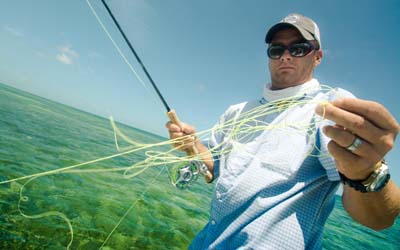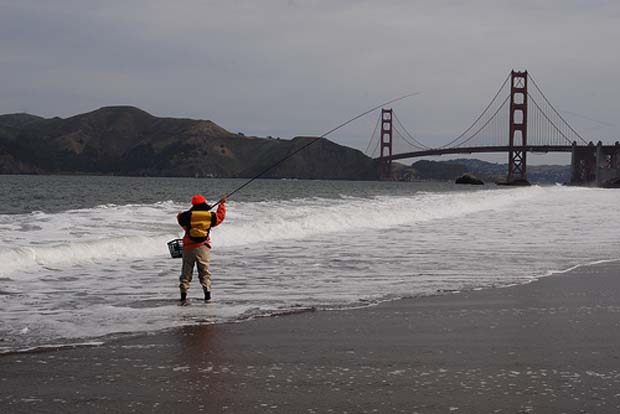[dropcap]F[/dropcap]ly lines are essential to the performance potential of each cast. A fly line that has undergone months of missions in the salt, stillwater ponds, runoff canals, marshes, dirty spring runoff water and remains uncared for months at a time will become a defective performer. Caked with grit, each cast will rub on the guides, especially the tip-top, and your casts will increasingly under-perform.
Bad things happen to fly line slobs
NOTE: High-end fly line manufacturers impregnate their fly line coating with a lubricant, and the line itself, being slightly porous, slowly releases that lubricant and helps keep the flyline as good a new. Grit and dirt clog those pores, interfering with lubricant discharge and a “pigtail” fly line is the reward. This is especially so in smaller diameter reels.
1. Coil memory is probably the most annoying. After a winter, or after months of on-reel storage, fly lines get a case of memory. Stretching does help, but a better way is to store fly line off-reel. No, off-reel fly line cleaning and storage is not labor intense nor does it take a long time.
2. A birds nest rarely occurs with a slick fly line, but add grit and dirt and Voila, you have it.
3 . Hand spooling backing and fly line is way too time consuming and is also trouble waiting to happen. The fly shop you bought the line from can do the best job of applying backing, fly line and best connection knots. Use a spooling device if performing that task at home.

Every fly angler has experienced a wicked twist in their fly line. Caption and image credit www.ginkandgasoline.
If maintaining your fly line and backing for more than one season is your goal, try this
Fly lines get dragged through and over brush, coral heads, flats sand and mud and get stepped on aboard a skiff. Unavoidably, they are subjected to wear while performing their quintessential function; ripping in and out of guides. Too, UV, heat, cold, pollutants, sun scream and hand oils all attack fly lines.
Backing is cheap, but if you fish the salt, beware
Fresh water anglers need not worry about backing as it is almost impervious to failing for several seasons of inattentiveness. That, however, is not true for saltwater fly anglers. Backing is degraded by saltwater itself, UV, heat and worse, dreaded mildew. A nice tarpon takes you past that new fly line and into old backing, and snap – trophy off along with that new $90 fly line. The backing was rotten.
Random line tips
• Immediately (do not let it sit and dry) after fishing soak reel in tap water. After soaking leave reel out where it will get best ventilation. Leave it there until next used.
• Before putting away for the season, or after a long multi-day trip that allowed you to fish daily, wash fly in warm water with a very mild detergent.
• If off reel for long storage periods put line on a peg in large coils and keep in a controlled atmosphere.
• Use line dressing recommended by manufacturer, do not get inventive here, and remember less is more.
• For that new season, stretch your fly line. It will cast much better.






